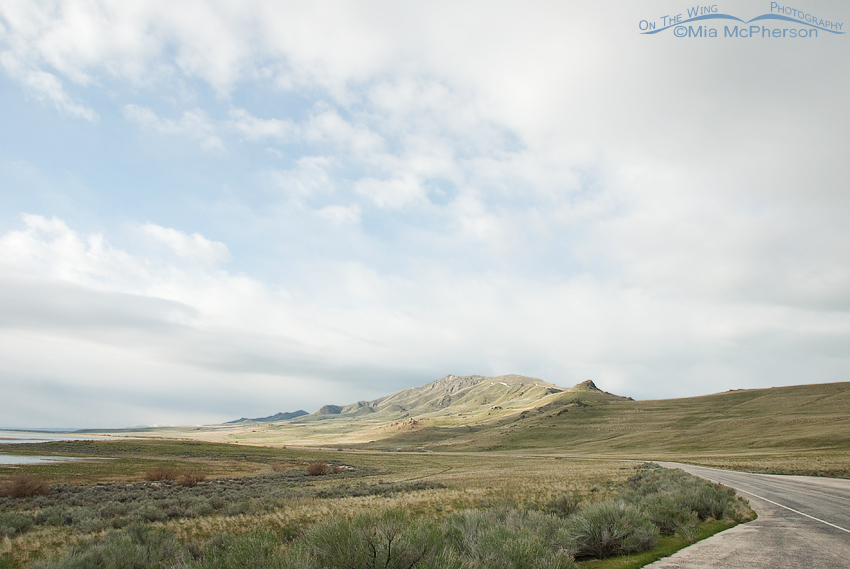 A Springtime View of Frary’s Peak – Nikon D200, f10, 1/320, ISO 400, +1.7 EV, Nikkor 18-200mm VR at 18mm, natural light
A Springtime View of Frary’s Peak – Nikon D200, f10, 1/320, ISO 400, +1.7 EV, Nikkor 18-200mm VR at 18mm, natural light
I’ve spent a few days out on Antelope Island State Park this past week and from all appearances spring is making its debut. You wouldn’t know it by looking east and seeing the snow-covered peaks of the Wasatch Mountain Range, but yes, winter is leaving the Great Salt Lake Valley. The weather is still a bit unstable at this point in time, one day it will be warm and sunny and the might be next cold with threatening storms on the horizon.
The photo above of Frary’s Peak on the island is quite a bit different looking than the image I posted awhile back here, now there is only a little bit of snow left on the peak, the sagebrush has started to leaf out and the grasslands are turning green.
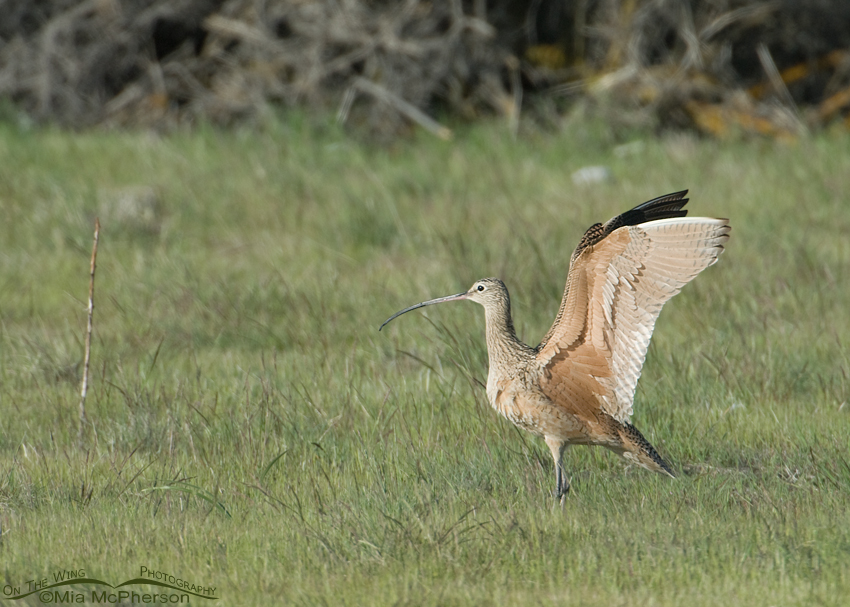 Long-billed Curlew wing lift – Nikon D200, f6.3, 1/800, ISO 400, +0.3 EV, Nikkor 200-400mm VR with 1.4x TC at 400mm, natural light
Long-billed Curlew wing lift – Nikon D200, f6.3, 1/800, ISO 400, +0.3 EV, Nikkor 200-400mm VR with 1.4x TC at 400mm, natural light
Along the causeway on the drive out to the island you can easily see many of the shorebirds that make the Great Salt Lake and surrounding areas their home during the breeding season are returning. I’ve seen flocks of Avocets, Long-billed Curlews and Willets feeding on the shoreline. The numbers of gulls have increased and I saw my first of the year Franklin’s Gulls fly past me as I came to the island.
Long-billed Curlews make themselves know by a wonderful call. Quite often I hear them before I can see them and for me they herald spring’s arrival.
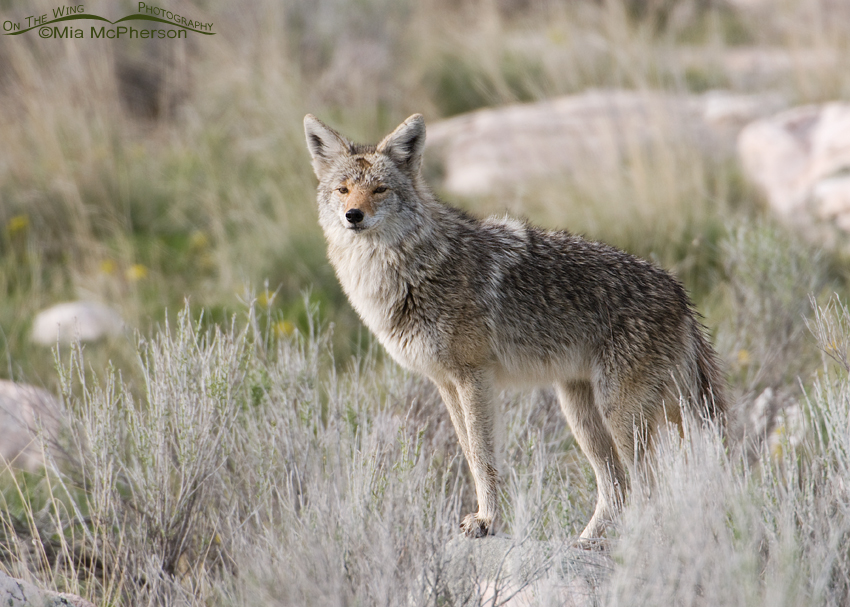 An alert Coyote – Nikon D200, f6.3, 1/640, ISO 400, +0.7, Nikkor 200-400mm VR with 1.4x TC at 400mm, natural light, not baited
An alert Coyote – Nikon D200, f6.3, 1/640, ISO 400, +0.7, Nikkor 200-400mm VR with 1.4x TC at 400mm, natural light, not baited
I’ve been seeing Coyotes more frequently roaming about the island hunting voles and I’ve noticed that they are beginning to shed their warmer winter coats for the sleeker ones they don in summer. The Coyote in the image above shows the shorter fur around its eye and a spot on top of the forehead. The Bison on the island have also begun to lose big hunks of fur and if you look closely you will find hanks of it hung up on Sagebrush branches and the dried stalks of Moth Mulleins. I’d love to find a coyote den this year to photograph the pups rolling around in mock fights with each other.
 Loggerhead Shrike – Nikon D200, f56., 1/200, ISO 400, +1.0 EV, Nikkor 200-400mm VR with 1.4x TC at 400mm, natural light
Loggerhead Shrike – Nikon D200, f56., 1/200, ISO 400, +1.0 EV, Nikkor 200-400mm VR with 1.4x TC at 400mm, natural light
Some of the Loggerhead Shrikes have already selected a mate and several pairs of them have flown low into the sagebrushes with nesting material in their bills. It won’t be long before there will be eggs in those nests. I’ve seen a few Sage Thrashers already and while going up to the parking area for Frary’s Peak I saw my first of the season Savannah Sparrow too. I’m looking forward to seeing the birds of the island I have missed all winter long.
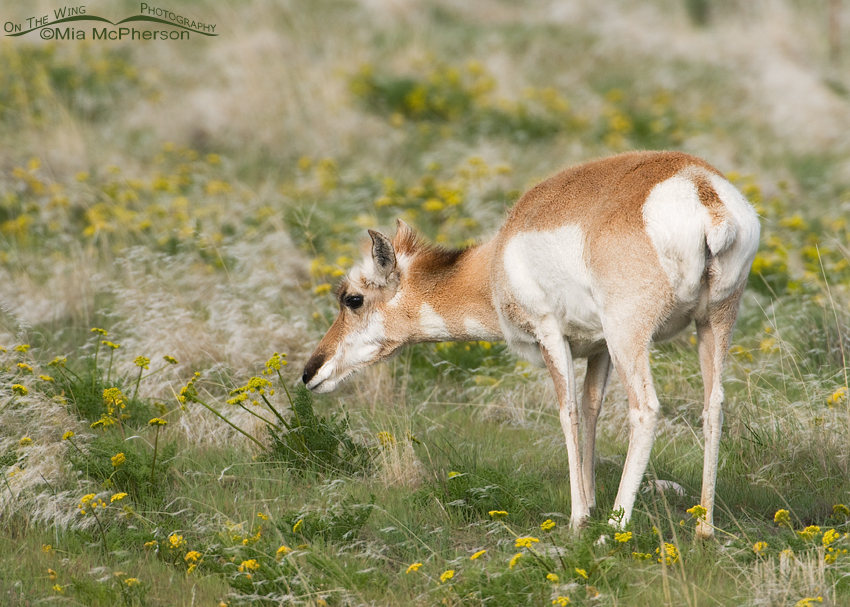 Female Pronghorn feeding on Gray’s Biscuitroot – Nikon D200, f7.1, 1/800, ISO 400, +1.0 EV, Nikkor 200-400mm VR with 1.4x TC at 400mm, natural light
Female Pronghorn feeding on Gray’s Biscuitroot – Nikon D200, f7.1, 1/800, ISO 400, +1.0 EV, Nikkor 200-400mm VR with 1.4x TC at 400mm, natural light
The herds of Pronghorn have been out grazing on the spring growth of the new shoots of grasses and Gray’s Biscuitroot.
I have noticed that many of the females are heavy with their young. I am fascinated by how quickly the newborn pronghorns are able to run quickly along side their parents especially taking into consideration that it takes most humans a year or so to walk at all. Besides that I think that young pronghorns are so cute that they delight me.
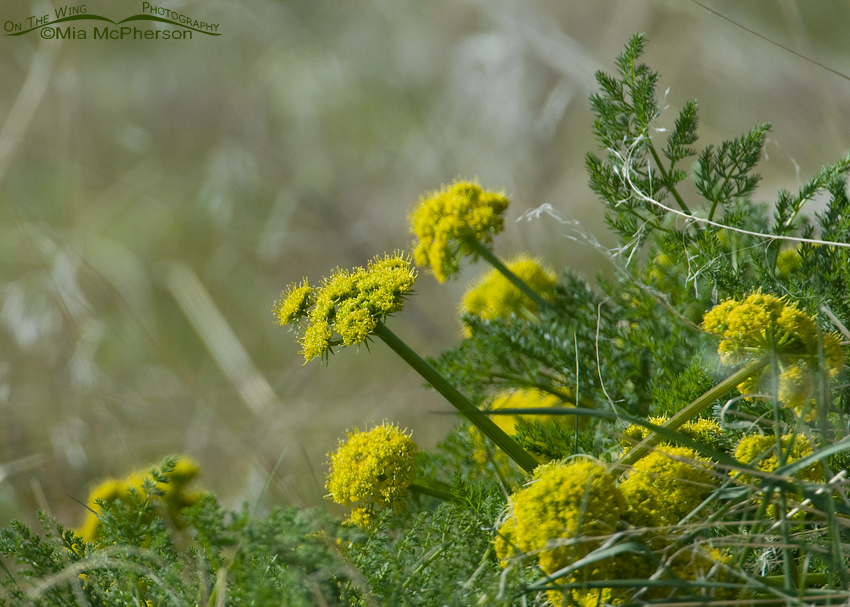 Gray’s Biscuitroot (Lomatium grayi) in bloom – Nikon D200, f6.3, 1/1000, ISO 400, Nikkor 200-400mm VR with 1.4x TC at 400mm, natural light
Gray’s Biscuitroot (Lomatium grayi) in bloom – Nikon D200, f6.3, 1/1000, ISO 400, Nikkor 200-400mm VR with 1.4x TC at 400mm, natural light
Gray’s Biscuitroot blankets some parts of the island in spring with their bright yellow blooms and green fern-like leaves. The biscuit roots are in the parsley family. It is documented that Lewis & and Clark would send scouts out to Native American camps and would trade for baskets of biscuit root and a bread that the natives made of the root called Cowas. Both the root and the dried seeds are quite edible, I’ve yet to take a nibble of the root, maybe one day I will.
The brine flies have started to make their appearance. An important food source for many of the birds on the island there will soon be places along the road where the swarms of brine flies look like dark mini-tornadoes. At least they don’t bite and the swallows love them.
Speaking of biting; I’m dreading the biting gnats that show up on the island about this time of year. They are very tiny little things but they sure makes their bites known. You can’t even see them to swat the nasty buggers! Be sure to use an insect repellent or you might be quite miserable!
Despite those gnats it is always worth the time to go to Antelope Island State Park and savor the gorgeous views, the abundant varieties of birds, unique geological formations and the wildlife seen on the island.
Mia


Quite a diversity of plant and animal life you encountered on this trip. I especially like the coyote with his coat half off! Avocets have been reported here in Indiana the last week. We have an important migration stopover for shorebirds in the southwest part of the state. Hopefully I will get to see Avocets in California when I go to the Mono Lake Bird Chautauqua in mid-June. And I am also familiar with the brine flies-Mono Lake has a similar ecosystem to the Great Salt Lake. Did you hear about the arsenic-loving microbes they have recently found there? I wonder if the Great Salt Lake would have similar organisms. Here is a link if you want to read about it.
http://science.nasa.gov/science-news/science-at-nasa/2003/30jul_monolake/
Julie, thanks for the link on the arsenic-loving microbes, that was an interesting read!
Awesome pics! Isn’t spring great? I love the first pic, with the big sky and the sunlight just touching on the peak!
Thanks Nicole, it is such a beautiful place!